Among the many countries in the world, India stands out for its incredibly rich history of renowned arts and crafts. India has always taken immense pride in its beautiful heritage and culture. However, in the hard going race of becoming a developed nation and keeping up with the ever-evolving technological landscape, the traditional art and culture of the country have gradually faded.
In the remote and deserted region of Rajasthan, existing around the Ranthambore tiger reserves, an initiative was born when ‘Dastkar’ was called upon to launch a rural income-generation program. This initiative gave rise to the Dastkar Ranthambore project.
In this article, we will dive into the amazing and inspirational journey of this project that has transformed countless lives and continues to inspire us with its beauty and impact.
How ‘Dastkar Ranthambore’ Began?
Dastkar is a private non-profit NGO that was started in 1981. Dastkar was commissioned to initiate a rural income-generation initiative in the villages situated in the area around Ranthambore Tiger Reserve, with a particular emphasis on empowering women nearly 20 years ago.
The Dastkar Ranthambore Project stands as a shining example of Dastkar’s commitment to revive traditional crafts and establishing craft groups with various forms. In this particular case, Dastkar’s work to breathe new life into local craft communities led to the rebirth of long-forgotten skills and traditions in the Sawai-Madhopur district of Rajasthan.
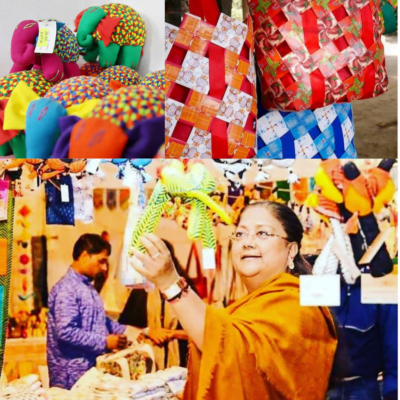
Through the establishment of a Crafts Centre known as the “Dastkari Kendra”, Dastkar started workshops for local artisans, motivating contemporary design, product development, and production system training, including aspects like costing and pricing. This was an area where craftsmen had nearly abandoned their craft traditions and had turned to agricultural labor for their livelihoods.
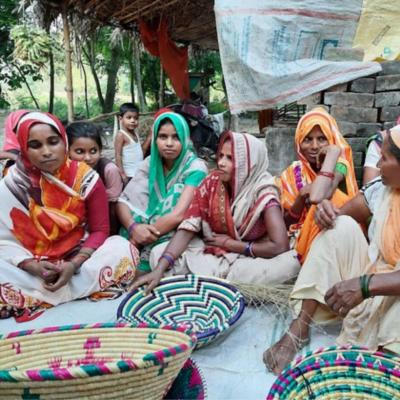
Collaborating with designers from prestigious institutions such as NID (National Institute of Design), NIFT (National Institute of Fashion Technology), and external consultants, the project offered skill development workshops covering tailoring, cutting and sizing, indigo and natural dye techniques, as well as refining firing and glazing skills for local potters.
A Small Room to the Well-Known Cottage Industry: A Journey
Back in 1990, Rameshwari marked a significant milestone as the first woman from the team to represent Dastkar Ranthambore at the Delhi Bazaar. She embarked on this journey solo and returned safely, inspiring other women in her village to venture beyond their homes. The initial sale of goods amounted to Rs 67,000, signaling just the dawn of their success.
The local women’s traditional Mandana art also gained admiration. Dastkar Ranthambore played a important role in rebirth of the fading crafts of black pottery and hand block printing. A dedicated block printing unit was established, and women from Kutalpura village received training in the Bandhini craft. Potters underwent instruction to sculpt charming animal figures, drawing the interest of tourists.
By 1993, the Ranthambhore Foundation provided the team with an expanded space known as the ‘kendra.’ This multifaceted area encompasses the production center, raw material storage, offices, a sales outlet, a training workshop, and a communal gathering space.
Today, the Kendra takes pride in all the trappings of a modern factory, including a generator, computer facilities, an RO water treatment plant, automatic sewing machines, and cutting machinery. Initially it was tough to use machines, but the women have now seamlessly incorporated them into their daily work routine.
The Economical effect
When Dastkar initiated the Ranthambore Project in 1991, there were merely 100 Bandhani workers in Sawai-Madhopur. Today, that number has grown to over 2000. This Dastkar project has directly empowered more than 370 artisans from villages in the vicinity. Monthly earnings, which used to hover around Rs. 500, now range from Rs. 2000 to Rs. 6000, a substantial sum in a rural economy.
The project’s turnover in 2011-2012 was Rs. 1.29 crore, a remarkable surge from Rs. 22 lakhs just seven years prior. The project continues to embrace new villages, and the craftswomen now traverse all across India to showcase their products at Dastkar and other bazaars, while also securing wholesale and export orders from Europe and the US.
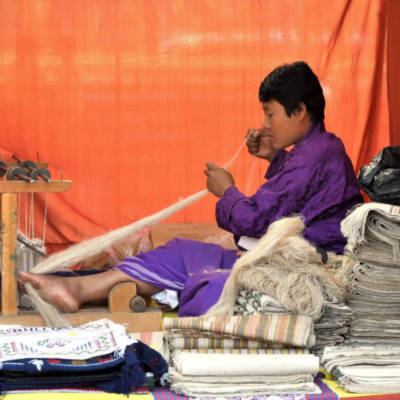
The primary sales channels for these women predominantly involve their stores in Rajasthan and participation in Dastkar’s Nature Bazaars located in cities such as Delhi, Pune, and Bengaluru. A smaller portion of their sales originates from online orders. However, their principal sources of income are now derived from multiple avenues. The Kendra at the national park remains a significant contributor, accounting for 63 percent of their sales. Export orders also play a substantial role, contributing approximately 18-19 percent to their income, while exhibitions make up the remaining 15 percent.
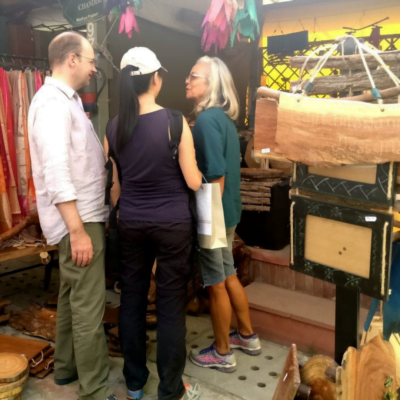
Notably, the Kendra’s contribution has decreased from its previous 80 percent share, as Dastkar Ranthambore has expanded its export orders, securing contracts with various hotel and store chains in the United States and Malaysia. Prominent customers include Taj Safari and other wildlife resorts, who appreciate their products featuring motifs of deer and tigers.
Societal Impact Of Dastkar : The Wave of Change
The Dastkari Kendra has become a dynamic catalyst for social development. Originating as a workspace for crafts production, the Kendra has expanded its scope by serving as a venue for various other activities. These include regular workshops on legal assistance, health, family planning, gender equality, group cohesion, management, and accounting.
The first half of the morning is dedicated to adult literacy classes. In a region where suspicion and caste divisions prevailed two decades ago, a sense of community has now blossomed, illustrating the profound impact of this project that extends far beyond commercial success.
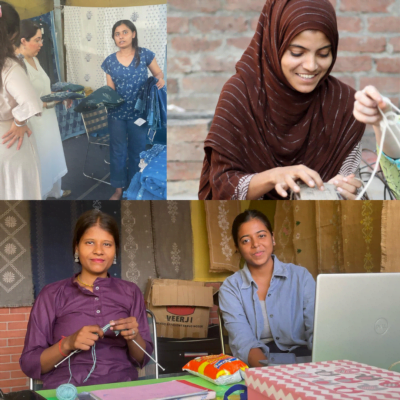
The women’s lifestyle is has changed now as most of them operate their own bank accounts, live in pukka houses, use gas stoves, and educate their daughters as well as sons. The biggest impact has been on the attitude towards the girl child.
Most girls from the villages go to college today. 25 years ago, this was unimaginable as girls hardly attended school and were married off at a young age. In fact, one of the women took soft loans to educate her daughters, one of whom is now a teacher and the other a nurse. The villagers have also adopted family planning, a topic that was taboo earlier.
Mad4India recognises Dastkar Ranthambore’s commitment to improving the rural-economic situation of that region and the beneficial impact he has on the people and the country.
If you enjoyed reading about Dastkar Ranthambore, you might also be interested in this article: 60 YO, Started Business To Uplift Tribal Women By Making Crochet Kids Toys Now Earning Rs 14 Lakh annually.
If you know about more inspirational stories about a person, company, new idea, or social initiative, and want us to write it on mad4india.com, share such information with us on Instagram, Facebook or LinkedIn.
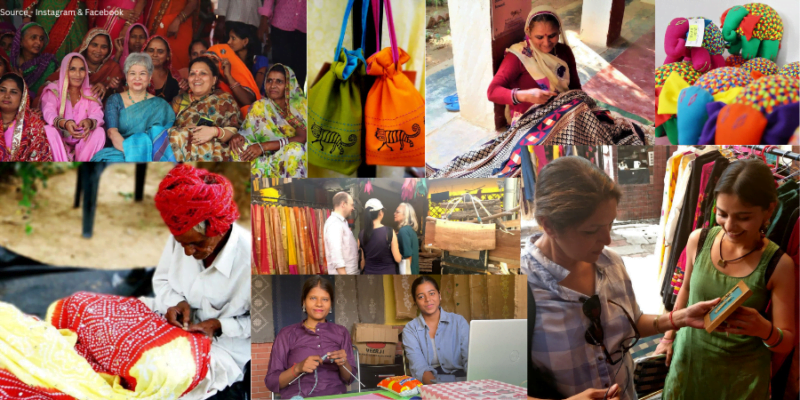
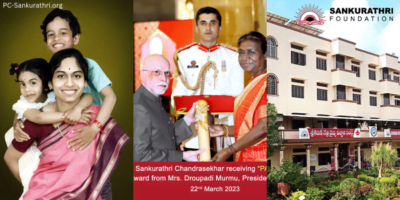
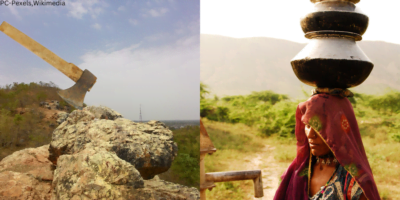

One Reply to “Dastkar Ranthambore Empowering Local Artisans Past 20 Years: Over 370 Artisans Uplifted”